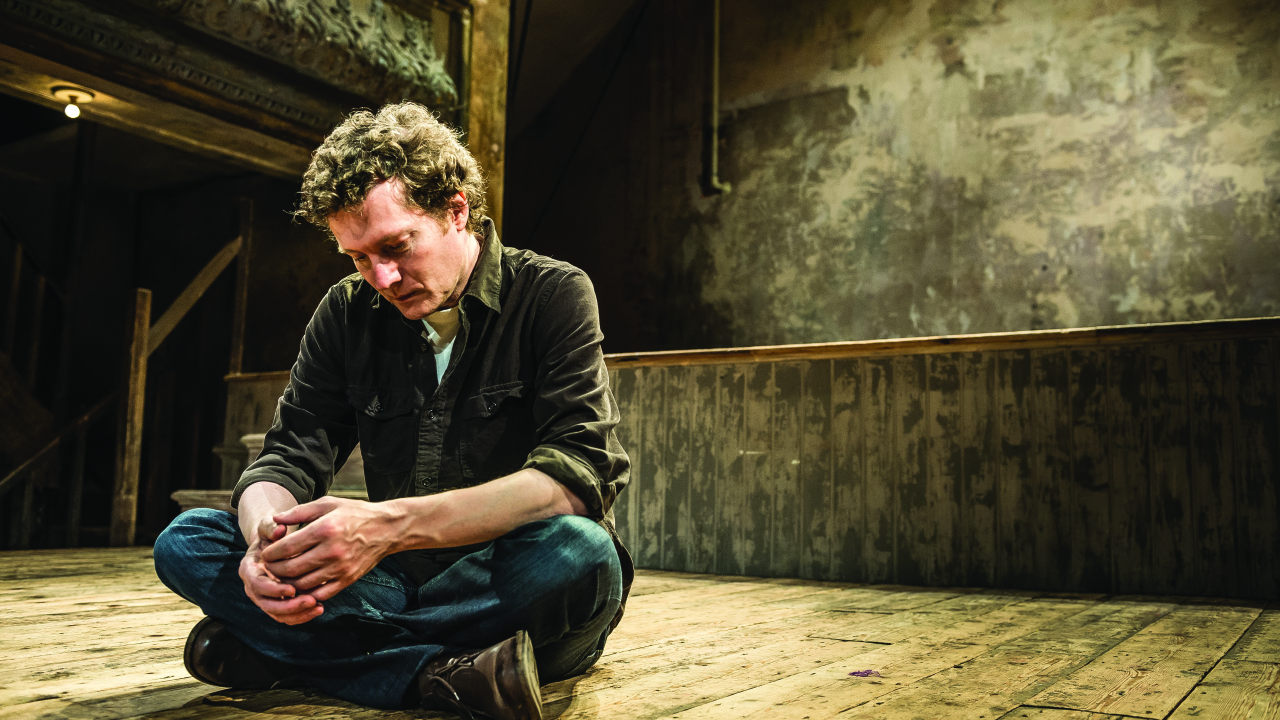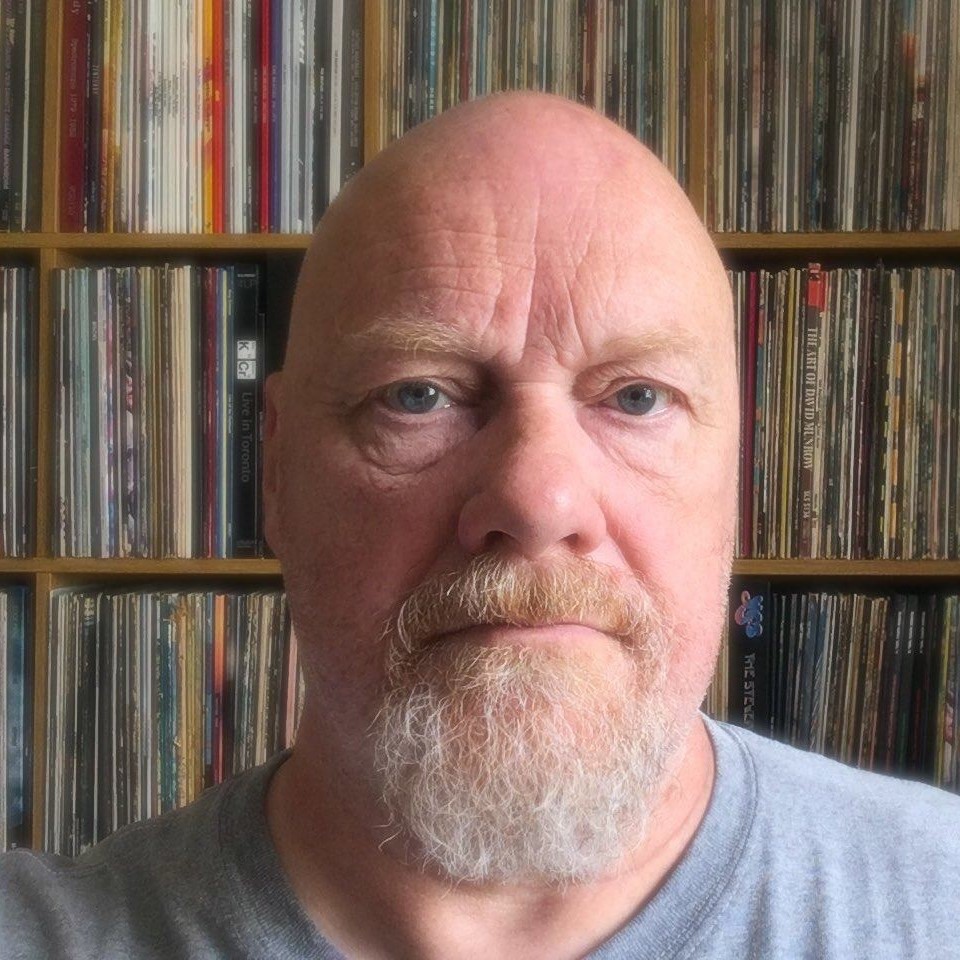Tim Bowness is talking about being in his first band in 1982 and his acute appreciation of the creative fervour and inventive clamour he encountered at the time. This came through listening to new and established artists such as Japan, Kate Bush, Pink Floyd, the Associates, XTC, King Crimson, Talking Heads and many, many others. “I hate interviews,” he says. “I do tend to ramble on. I did an interview the other day and I find that when I’m talking in abstract, it can be absolutely nonsensical, going off on rambling tangents. With email I’m a lot more concise and precise…”
There’s a pause as he recalls that prior to this telephone conversation, he’d sent your correspondent an email running to 4,000 words about his new album Abandoned Dancehall Dreams. He laughs. “Isn’t 4,000 words concise?”
Any discussion with Bowness is always going to cover a lot of ground. The starting point might well be to do with the making of the follow-up to My Hotel Year, his debut solo disc from 2004, but along the way topics will include literature, growing up in a provincial town, encounters with art, formative movies, adolescent crushes, obsessive traits, the highs and lows of parenting (he’s been a dad these last three years) and whatever is good on catch-up TV or Netflix – American Horror Story, since you ask.
All of this might appear as his dreaded ‘rambling tangents’. Yet whether subtle or overt, they all play a part in shaping Bowness’ latest release. Rambling, it seems, is very much part of his artistic process. At the very least, it’s a tacit acknowledgment that in order to get to a specific place, the route you take is sometimes, by necessity, a circuitous one.
Guitarist Michael Bearpark, whose work is a decisive and exhilarating feature of the new album, described Bowness as having a “whim of iron”, a charge to which the singer readily admits. “If you take my tastes in literature, cinema and music, I’d say 50 per cent of what I believe holds rock solid, and may have held rock solid since I was 13 years old. But 50 per cent is completely subject to change and whim. It’s true I will start something with the most adamant view of how it will be, and two days later there’s an adamant view that it’s something different. You cut your losses early. You assess something and think, ‘That’s not going to work.’ Sometimes you’ve got to come to those conclusions quickly because you can’t spend six hours of rehearsal realising you were right within the first 10 minutes. It’s a waste of everybody’s time.”
Having begun life initially as a follow-up to No-Man’s Schoolyard Ghosts, Abandoned Dancehall Dreams accommodates two apparently competing aspects of Bowness’ personality: the meticulous perfectionist and the mercurial experimentalist espousing a strict ‘first take/right take’ ethos.
“I suppose this is an indication of that ‘whim of iron’ notion. Smiler At 52 was something that I had an idea for and realised very quickly one afternoon in my home studio. Bar certain overdubs where the strings pads are replacing real strings, what you hear on the finished album is essentially my first-take demo. I could never improve upon it.
“With The Warm-Up Man Forever, I knew there was something good in it but knew it wasn’t right, and it took me five years to get there from my original demo. With composer Andrew Keeling to provide string arrangements and King Crimson’s Pat Mastelotto on drums to more fully realise my ideas, it was a delight to hear something come together in the way that I wanted it to. I think the directness and the power of the drums act as a contrast with perhaps what many people might be expecting of me.”
The track’s thunderous drumming and terse, quick-moving strings deliberately contain a reverberation of the kind of music Bowness was listening to when he first started singing. “I was drawn to the classical minimalists in the late 70s and early 80s, when I was really finding my musical feet as a listener. I certainly remember those soundtracks by Michael Nyman for Peter Greenaway films such as The Draughtsman’s Contract. To my ears they possessed the same level of attack and excitement that Kate Bush’s music had. When I was making this album, I wanted to explore the bizarre notion of what Hounds Of Love might sound like combined with The Michael Nyman Band.”
That kind of associative leap applies to many of the characters populating Bowness’ songs, both in his previous work with No‑Man and on Abandoned Dancehall Dreams. Often sober and frequently unflinching, his songs portray individuals shouldering regret, burdened by what might have been and forever gnawed by a sense of something left unresolved. The confessional air emanating from his lyrics suggest he’s pursuing an autobiographical narrative. Of course, it’s not entirely as straightforward as that, as Bowness explains.
“The character that appears twice on the album in Smiler At 50 and Smiler At 52 is a hybrid of a couple of ex-girlfriends, and a couple of girls who myself and friends in our teenage frustration ogled. In a way these songs are asking: where are those people now? I think we all have a sense of regret about either the things we’ve done or people we’ve let go of. It could be the regret of how we’ve behaved with people who’ve died. Writing about it is partly acknowledging that although I’ve progressed from things in my past, they always come back in some way. I think regardless of how happy we are in the present, there are always those past echoes.”

A particularly potent blast from Bowness’ past comes from the John Schlesinger-directed movie Billy Liar, which he saw as a teenager growing up in Stockton Heath, Cheshire.
“In it there’s a scene set in a dance hall. It encapsulated the idea of having big dreams in a small town. It’s what the dance hall represented in that type of community, which is the sort of place I was brought up in. Certainly my parents’ generation were very much a part of that and when I was growing up, there was still the legacy of that era – whether it was the grand buildings in a state of disrepair or the new discos and nightclubs that had replaced them; the contrast between the glamour and the dirt.
“There’s also the lingering memory of Julie Christie’s character in the movie who does make the escape to London, and there’s a certain poignancy in that moment as she leaves Billy standing on the railway station platform after he’s deliberately sabotaged his own escape. It’s not only the direct story of leaving the provinces for London – it’s the metaphor for the big love that got away.”
Bowness cites 19th-century American writer and poet Stephen Crane’s assertion that one’s environment “frequently shapes lives regardless”. Environment is, of course, not simply a case of bricks and mortar but the accumulating layers of cultural connections and associations we encounter as we continue to grow and develop. Wading through all those old books, movies and albums might well have you rambling off in all sorts of enlightening directions, as well as the occasional blind alley. Yet they all provide the foundations of who you are and quite often point towards the person you’d like to become.
“32 years of being involved in music and hopefully developing my musical identity has led to me reinventing 1982!” laughs Bowness. “In some ways, Abandoned Dancehall Dreams is the album I would’ve dreamed of making when I first started singing but which I wouldn’t have had the technical ability to do.”
It’s taken him a while but he got there in the end.
Abandoned Dancehall Dreams is out now on InsideOut. See www.hotsdesign.co.uk/timbowness for more information.

